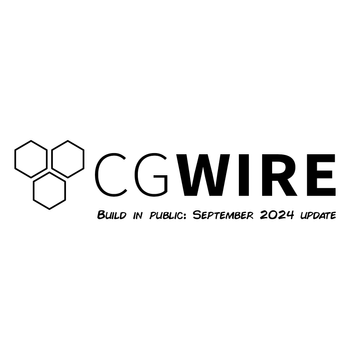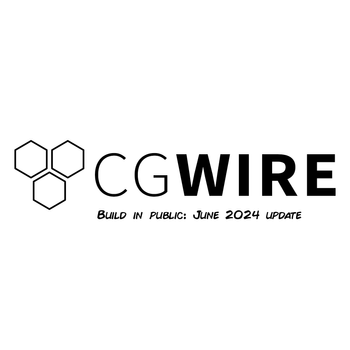From character design to rendering, animators use many software tools in their everyday work. But with so many options, choosing the right one can feel like navigating a labyrinth.
Truth is, there's no single perfect tool: each program has its own strengths and weaknesses. Wouldn't it be better to be able to leverage any tools depending on their advantages or animators' personal preferences?
With the right production pipeline, this is a possibility. In this article, we explore four key points to take into account when designing your pipeline for multiple DCC tools: creating a single source of truth, using a review engine, rendering, and versioning.
Why use multiple tools
Studios rely on a vast arsenal of digital tools, but it's common for project teams to agree on using a single digital content creation tool―Maya, Blender, Unity, etc. However, allowing the use of multiple DCC tools brings several benefits.
First, it fosters agility. Each animator can use whatever tool they prefer and leave the integration phase to the production pipeline using standard file formats. They can be productive from day one and keep the same pace throughout the production.
Not only is it good for productivity, but having a range of accepted tools expands the potential talent pool you can hire from. Studios can attract artists with specific skill sets honed in different software, allowing them to assemble a dream team perfectly equipped to tackle the project's unique demands.
This approach isn't without challenges, of course. Compatibility issues can arise, forcing artists to jump through hoops to import or export files between programs. Maintaining a consistent visual style across various tools can also be tricky, requiring meticulous planning and communication.
Despite this, when you have the right production pipeline to help you streamline workflows, the pros can outweigh the cons. Let's see how.
1. Creating a single source of truth
Let's say each animator uses their favorite 3D graphics tool. How do we combine each asset together to create scenes? How do we preserve rigging information? What about editing? We need to maintain consistency and avoid information silos.
To make things simpler, the pipeline should include a single source of truth (SSOT): a central repository that stores all your project's critical information, acting as the definitive reference point for all teams to eliminate the pitfalls of scattered data―redundant files, outdated versions, and wasted time spent chasing down the latest iteration. While your animation software is dedicated to creating and editing assets, a dedicated SSOT acts as a central hub for storing asset versions.
To set this SSOT, you can use asset managers like Ayon or Prism Pipeline. They will allow you to manage file locations and versioning via any software. If you want to go further and build a file asset library for future reuse, we recommend you to look at dasElement, a full system to browse and organize all your files.
Last but not least, with a production tracker like Kitsu, you can import asset information from any content creation tool to build the project's creative asset library and keep a history of all artistic decisions and deliveries.
2. Review engine
In animation, the creative process is rarely linear: ideas evolve, revisions are made, and constant back-and-forth between creation and review is essential for crafting a polished final product. This iterative nature demands a robust system for seamlessly transitioning between editing software and feedback sessions.
Traditionally, this might involve exporting files, sending them to reviewers, and then waiting for feedback before returning to the editing software. This disrupts workflow and creates bottlenecks, especially when everyone uses different DCC tools―different formats, conventions, etc.
That's where a production tracker is required. It acts as a central hub for delivery previews and validations. It allows reviewers to provide detailed feedback directly on top of the animation itself. This feedback can then be easily integrated back into the editing software via asset managers.
Production trackers are software agnostic, so they can be integrated with any software. Which allows for the review of any deliveries, whatever the source software is.
3. Versioning
As your assets get refined, keeping track of different versions becomes crucial to track changes or revert to previous versions if necessary.
The challenge will be to export results in formats supported by your target DCC. Maintaining a consistent file format is also a good option for cross-integration between tools. Popular formats like FBX or USD, facilitate smooth data exchange between most animation software. By using a standard format, you avoid compatibility issues and ensure assets can be readily imported and manipulated in different applications.
With asset managers, you can manage different versions of your working files, whether they are Blender models, Maya animations, or Unity scenes. Platforms keep track of each iteration, allowing you to see the history of changes and easily revert to a previous version if needed.
Once your working files are exported to the right place, you will be able to build your scenes with the right version of any elements involved in a shot context. You will also be able to change elements easily every time a new version is published.
4. Rendering
Coordinating rendering tasks across multiple DCC tools can also be a headache. Each software has its own rendering engine, settings, and output formats, making it is challenging to maintain a consistent look across scenes.
This is why most studios use a scene assembler like Mercenaries Guerilla for instance or SideFX Solaris. If you set proper versioning of your files, because most render farms can support different setups and rendering software you should be able to render any scene initially built with various software.
From your pipeline, you can easily set an efficient iteration loop: export deliveries, assemble scenes, render them, push the result to the production tracker, and send feedback from the review engine. Then, your team will create new versions and run the process again.
5. Software setup
Another challenge you will face is managing the different software installed on artist machines. It is very important to keep consistent software versions used by the artists, or you will end up with a pipeline nightmare.
The most common solution is to rely on:
- Ghost images of your installations to set new machines in a glimpse
- Package managers like Rez to organize all your software and libraries
- A firm policy about the available versions
It will contribute to the artist's experience. They will enjoy you making things clear from the beginning.
Conclusion
Using multiple digital content creation tools can contribute significantly to your success. You unlock a wider creative toolbox and enhance your team's ability to bring your vision to life.
However, it comes with a cost: it requires setting up a stronger pipeline. It will require setting up an asset manager and a production tracker as the glue that holds everything together. They will be needed to link every building step together and track and review all the work done.
In the end, using multiple software to get the most out of them will require particular discipline. You will need to document and prepare your pipeline: to explain the rationale behind the choice and select the right file formats to ensure proper compatibility between the different software you use. Once you build your stack, we recommend modifying your software list as little as possible to avoid extra work and unexpected situations during production.
If you do your homework, using many different software will be seamless, and your team's creativity will be unleashed. Setting clean and innovative pipelines is always a challenge, but it will make teams happy, which is worth the effort!
Come say hi in our Kitsu Community Discord of 1500+ animation/VFX professionals and share your tips!






